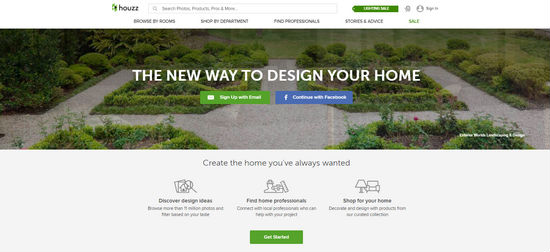Growing a startup blog is a breeze nowadays.
Thanks to the explosion of the freelance economy, finding writers to create high-quality content for your site is no longer a time-consuming or difficult process.
But we don’t want to start any old blog. We want to grow a blog that our audiences will look forward to reading regularly! Well, that’s another story.
In this article, we’ll cover three examples of startup blogs with killer content strategies. Then, we’ll talk about how you can best go about crafting your own content strategy.
1. Van Winkle’s by Casper

Nobody likes buying a mattress. There are too many stores to choose from, to many models to try out, and getting your mattress home is a massive headache.
Enter Casper, a New York-based startup that sells mattresses online. They’ll not only help you find the right mattress, but they’ll even deliver to your house.
What’s unusual with Casper? Well, mattresses aren’t exactly a glamorous business, nor one that would typically receive any attention in Silicon Valley.
Casper has made waves in the startup world however, and that’s in large part thanks to their incredibly useful and unique blog Van Winkle’s. Instead of just talking about mattresses, it’s a blog about all things sleep.
By positioning themselves as both an expert and an accessible resource on the topic of sleep in general, they’ve grown their blog into one hell of a lead magnet.
Reading Van Winkle’s, you’re sure to find at least one article that will catch your attention. Just take a look at their article “Are Sarcasm and Creativity Linked?”, which investigates the likelihood that your snarkiest friends may be your most creative friends as well.
They have more informative posts like “How to Check for Bed Bugs in a Hotel Room or Airbnb” as well. As you can see, both stories are related to the world of sleep and are nuanced with scientific research.
Can you hear that though? It’s the sound of traditional marketers groaning that there is no clear pressure to buy a mattress in the blog’s articles. Don’t worry, you can safely ignore their pleas.
With thousands of subscribers, the no-pressure trust building going on in Van Winkle’s is highly effective. After all, it’s a lot easier to make a blog a part of your audience’s lifestyle and daily routine if you’re not peppering them with ads and sales copy.
Takeaways
Choose a specific niche: If you pick, and stick to a specific niche, readers will be far more likely to remember your blog.
Focus on your audience: Too many content marketers make the mistake of highlighting their brand before the value of their content. This works to their disadvantage because millennials aren’t so easily lured in by advertisements.
It’s more effective to discover your audience’s interests and align your content objectives around them. By doing so, you’ll get significantly more traffic and tons of loyal followers.
Be creative: There’s a lot of interesting content that you can publish. Hell, if Van Winkle can make sleep interesting, imagine what you could do with a more exciting subject.
If you think you’re running out of creative ideas, try looking at scientific studies that have focused on your niche. Angle your next piece of content at recent discoveries and updates.
There’s no shortage of interesting stuff out there that you can spin into a useful and engaging article. All you have to do is be on the lookout.
2. Mr. Porter

Since the fashion industry is dominated by female influencers and a female audience, the words “men’s fashion” might sound a hard sell. However, Mr. Porter, fast becoming the online destination for men’s retail, seems to beat the odds with their classy blogging style.
The site not only features trends on menswear, but it also covers sports, work, food and travel. In short, everything related to the “male lifestyle”.
For a taste, head over to their website to read about “Exploring Brazil, Beyond Rio” or “The Eight Best Sports Films. Ever”. If you’re a guy, chances are you’ll find at least one article that piques your interest.
Not the reading type? No, problem. They’ve got that covered too. They feature videos in their long form journalistic pieces as well, so visitors always have the option to either watch or read.
You might think that a fashion brand has no business publishing content that’s not related to fashion. However, Mr. Porter proves that a good blog indirectly turns readers into brand aficionados.
In Mr. Porter’s case, the numbers don’t lie. As of 2016, their website has 2.5 million unique monthly views, and 450,000 customers. That’s pretty amazing for a business that’s been around for just five short years.
Takeaways
Understand your audience’s lifestyle: Learn their interests and the activities that they regularly engage in. Once you’re up to speed, you can focus on producing content that will really resonate.
Establish a loyal following: Generate content that incentivizes your audience to visit your site on a regular basis.
3. Houzz

Want to know the best way to redesign your own home? Thanks to Houzz’s online platform, you can easily get inspiration! It’s a simple platform that can connect you with other homeowners and professionals in a “uniquely visual community.”
Whether it’s shopping for furniture or looking for design inspiration, Houzz definitely lives up to the visual experience. The platform is filled with actionable tips and tricks for every homeowner, followed by photographs of dreamy home spaces.
The blog itself is chock full of useful DIY guides, thematic inspiration, and expert commentary. For folks with even a passing interest in home design or furniture, this is the place to go.
For a sample, check out “10 Simple Tips for Transforming Your Home Life”, which feature easy adjustments that could make your home life easier.
Takeaways:
A picture is worth a thousand words: Quality photographs are guaranteed to attract your audience. Plus, it’s a great way to illustrate what your content is all about.
Don’t try too hard to sell: If you want to lessen the promotional feel of your website, focus on what your audience would want to read. Don’t explicitly sell the product.
Focus on usability: Share actionable tips and tricks that your readers could actually apply in their daily life.
Creating the Foundation for Your Blog’s Content Strategy
Now that we’ve talked about a few of the most successful startup blogs and examined the lessons that we can learn from them, it’s time to create your own blog’s strategy.
A good way to start is to choose your own niche. Pick one that’s close or at least related to your industry. Here is a list of the previous startup blogs and their respective niches:
- Van Winkle’s: sleep
- Mr. Porter: men’s lifestyle
- Houzz: home/interior design
However, you should think about the long-term goals that your brand is trying to accomplish with your content.
Here are some sample objectives:
- Get your audience to visit your website regularly.
- Drive sales.
- Establish your brand’s authority in the industry.
- Build your brand’s online credibility.
- Create a blog with a loyal following.
Which blog strategy would work best with your brand?
Let’s say your long term plan is to create a blog with a loyal following. Well, the first step then is to focus on creating interesting content.
Observe Van Winkle’s model and incentivize your audiences to become regular visitors by publishing unique content that is related to your niche. Just make sure you stay up to date with the latest trends and discoveries in your industry.
If you’re still unsure about how to develop your content strategy, don’t be afraid to experiment. Publish blog posts and track which types of content actually drive engagement from your audience.
Guest Author
Monique Danao is a freelance writer, content creator and copywriter with expertise in tech, food and digital marketing. When she’s not creating her next big article, you’ll find her enjoying funky food, listening to music, stalking startups and researching updates on tech. You may contact her through her website or follow her on Twitter.








